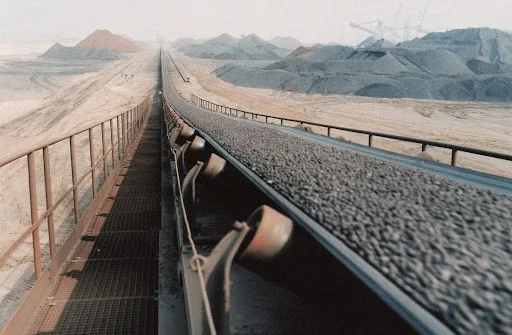Mining Conveyors Overview
Mining Conveyors Overview:
Conveyors play a crucial role in the mining industry by transporting bulk materials efficiently and safely. They are used to move various types of materials, such as coal, ore, rocks, and aggregates, over long distances, across different terrains, and between different processing stages within a mine site. Here are some key points about conveyors in mining:
1. Types of Conveyors: There are several types of conveyors used in mining operations, including belt conveyors, screw conveyors, vibrating conveyors, and bucket elevators. Belt conveyors are the most common and widely used, consisting of a continuous belt looped around pulleys and supported by idler rollers.
2. Material Handling: Conveyors are used for various material handling tasks in mining, such as loading and unloading trucks, stockpiling materials, feeding crushers or screens, and transferring materials between processing equipment.
3. Efficiency and Productivity: Conveyors improve efficiency and productivity in mining operations by automating material transport, reducing manual handling, and enabling continuous operation. They can handle large volumes of materials and have high conveying speeds, resulting in increased throughput.
4. Safety: Conveyors enhance safety in mining by reducing the risk of accidents and injuries associated with manual handling and heavy machinery. They minimize the need for personnel to work in close proximity to moving materials and provide a controlled and predictable means of transporting materials.
5. Long-distance Transport: Conveyors are ideal for long-distance material transport within mining operations. They can span considerable distances and negotiate terrain obstacles such as hills, valleys, and rivers. This makes them suitable for connecting different parts of a mine, including excavation areas, processing plants, and storage facilities.
6. Customization and Adaptability: Conveyors can be customized and adapted to suit specific mining requirements. They can be designed to handle different types of materials, operate at various inclinations, and accommodate specific site conditions. Additionally, conveyor systems can be expanded or modified as mining operations evolve and expand.
7. Maintenance and Monitoring: Regular maintenance and monitoring are essential for conveyor systems to ensure optimal performance and prevent breakdowns. Monitoring techniques such as vibration analysis, temperature monitoring, and belt alignment systems are employed to detect potential issues and allow for proactive maintenance.
8. Environmental Considerations: Conveyors offer environmental benefits in mining operations. By reducing the need for truck haulage, they minimize fuel consumption, exhaust emissions, and noise pollution. Conveyors also contribute to the efficient use of land, as they require less space compared to alternative transportation methods.
Overall, conveyors are integral to the mining industry, providing efficient, safe, and reliable material transport. They contribute to increased productivity, improved safety, and reduced environmental impact, making them a critical component of modern mining operations.





Post a Comment